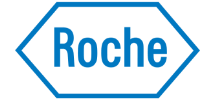The main active ingredient in this GTN patch that is used for chest pain and hypertension is Nitroglycerin, which, like other organic nitrates, is a potent dilator of vascular smooth muscle. The effect on the veins is greater than that produced on the arteries, which leads to a decrease in cardiac preload. The systemic vascular resistance is hardly changed, the heart rate does not change or increases slightly, and the pulmonary vascular resistance decreases accordingly.
In normal individuals or those with coronary artery disease (without heart failure) nitroglycerin slightly decreases cardiac output. Doses that do not alter systemic blood pressure often cause arteriolar dilation of the face and neck, leading to flushing. Dilation of the meningeal arterioles could explain the headaches that often occur. Rapid administration of high doses of nitroglycerin reduces blood pressure and cardiac output causing paleness, weakness, dizziness, and activation of compensatory sympathetic reflexes. There may be a noticeable hypotensive effect, especially in an upright position.
Always use the angina treatment medication patch exactly as your doctor has told you. Ask your doctor or pharmacist if you have doubts.
Your doctor will tell you which dose of transiderm is best for you and how many patches to use based on your individual needs.
It will also tell you when and how often to change the patch and the duration of treatment. Carefully follow your doctor's instructions and do not exceed the recommended dose.
How many Transiderm patches should be used
In general, treatment begins with the smallest patch and is gradually increased. For most patients a Transiderm 10 is sufficient. Transiderm 15 is indicated in patients who have not obtained a satisfactory clinical response with the lower dose nitroglycerin patches.
Do not use more than two Transiderm 10 patches or one Transiderm 15 patch combined with one Transiderm 5 patch at the same time. Normally, you should put on a new patch once a day, preferably in the morning. Your doctor may direct you to remove the patch for 8-12 hours a day, usually at night. If you think the action of Transiderm is too strong or weak, tell your doctor.
Depending on the response to treatment, your doctor may increase or decrease your dose.
How and when to use Transiderm patch
Choose any area of the skin of the torso or upper arm, without hair. The skin must not be inflamed, cracked, or irritated. For the patch to adhere well, the skin must be clean, dry, and free of creams, lotions, oils, or powders. You must choose a different area of skin every day. Wait several days before choosing the same area again.
Each Transiderm patch is individually packed in a heat-sealed pouch. Open the bag through the notch without using scissors and remove the patch. The patch (pink in color) has an adhesive surface covered with a white plastic protective sheet.
Tear the pouch by the notch and remove the patch. Carefully hold the patch so that the white protective sheet is facing you.
Firmly bend the tab forward with your thumb. Peel off the white backing from the patch starting at the tab and discard. Do not touch the adhesive.
Firmly press the adhesive part of the patch onto your chosen body area (torso or upper arm) using the palm of your hand. Hold it tight for 10-20 seconds. Make sure it is well adhered to, especially at the edges. But don't try to make sure by peeling it off once it's adhered to your skin.
The transiderm patch should be withdrawn when the doctor tells you to. When you change the patch, fold it in half, squeezing the ends together and sticking the adhesive together before disposing of it properly as it still contains nitroglycerin. Never cut or tear the patch. Any remaining adhesive that may remain on the skin can easily be removed with alcohol. To apply the next patch, you must choose a different area of the skin.
The transiderm patch adheres well to the skin and its action is not affected by bathing, showering or physical activity, if it is correctly placed. If the patch still falls off, it will be discarded and a new patch will be placed elsewhere on the skin. If you forget to remove the patch at the appropriate time, remove it as soon as possible and put on the next one without altering the established schedule.
Like all medicines, this heart medication can cause side effects, although not everybody gets them. The following side effects may come and go during treatment. Normally, they do not need medical attention, but consult your doctor in case they last or are serious.
Very common (may affect more than 1 in 10 people):
Common (may affect up to 1 in 10 people):
- Headache, which could be treated with mild pain relievers.
Uncommon (may affect up to one in 100 people):
- Skin irritation: Slight redness and itching under the patch may occur. This will go away within a day after removing the patch. Regularly change the patch application site to avoid local irritations.
- Skin allergies: The skin under the patch becomes very red, swollen, or blistering. If you experience a generalized rash, covering a wide area of the skin, tell your doctor.
Rare (may affect up to one in 1,000 people):
- Redness of the face
- Dizziness, especially when getting up quickly, due to a decrease in blood pressure, so it is recommended to do it slowly and, if you get dizzy, sit or stretch
- Accelerating heart rhythms
Very rare (may affect up to one in 10,000 people):
- Dizziness
- Unknown (the number of affected patients cannot be calculated from the available information):
- Palpitations: an abnormal sensation of the rhythm of the heart. Tell your doctor if you have a very marked sensation.
- Generalized rash all over the skin

























